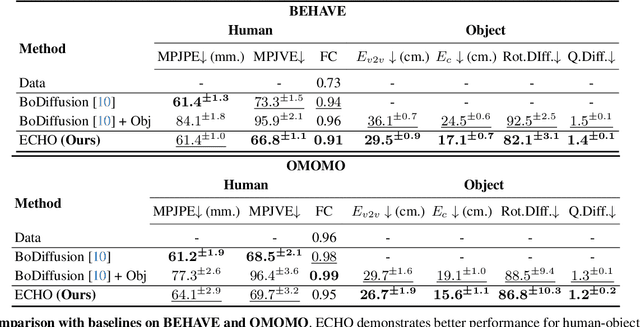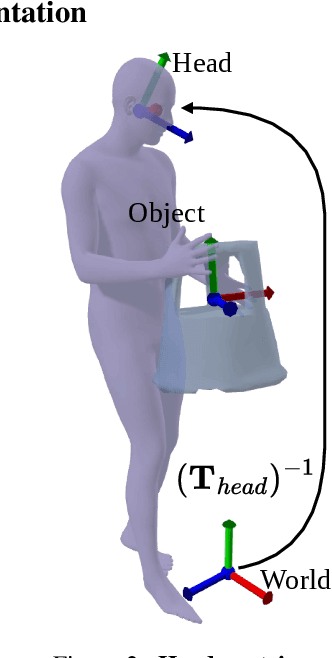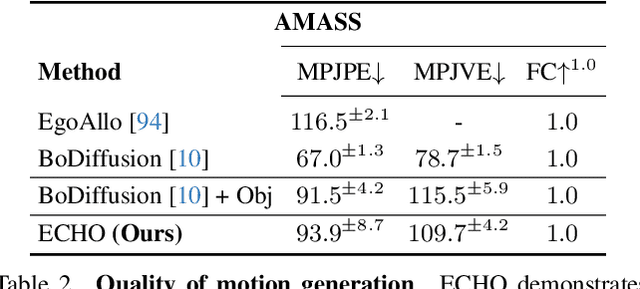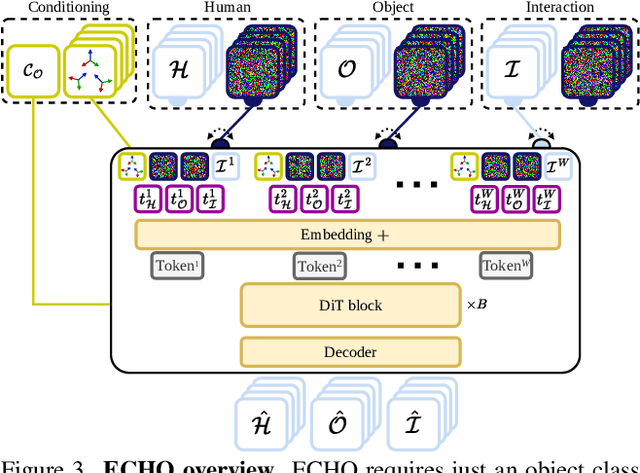Xu Chen
Beyond Benchmarks: The Economics of AI Inference
Oct 30, 2025Abstract:The inference cost of Large Language Models (LLMs) has become a critical factor in determining their commercial viability and widespread adoption. This paper introduces a quantitative ``economics of inference'' framework, treating the LLM inference process as a compute-driven intelligent production activity. We analyze its marginal cost, economies of scale, and quality of output under various performance configurations. Based on empirical data from WiNEval-3.0, we construct the first ``LLM Inference Production Frontier,'' revealing three principles: diminishing marginal cost, diminishing returns to scale, and an optimal cost-effectiveness zone. This paper not only provides an economic basis for model deployment decisions but also lays an empirical foundation for the future market-based pricing and optimization of AI inference resources.
SAIL-Embedding Technical Report: Omni-modal Embedding Foundation Model
Oct 14, 2025Abstract:Multimodal embedding models aim to yield informative unified representations that empower diverse cross-modal tasks. Despite promising developments in the evolution from CLIP-based dual-tower architectures to large vision-language models, prior works still face unavoidable challenges in real-world applications and business scenarios, such as the limited modality support, unstable training mechanisms, and industrial domain gaps. In this work, we introduce SAIL-Embedding, an omni-modal embedding foundation model that addresses these issues through tailored training strategies and architectural design. In the optimization procedure, we propose a multi-stage training scheme to boost the multifaceted effectiveness of representation learning. Specifically, the content-aware progressive training aims to enhance the model's adaptability to diverse downstream tasks and master enriched cross-modal proficiency. The collaboration-aware recommendation enhancement training further adapts multimodal representations for recommendation scenarios by distilling knowledge from sequence-to-item and ID-to-item embeddings while mining user historical interests. Concurrently, we develop the stochastic specialization and dataset-driven pattern matching to strengthen model training flexibility and generalizability. Experimental results show that SAIL-Embedding achieves SOTA performance compared to other methods in different retrieval tasks. In online experiments across various real-world scenarios integrated with our model, we observe a significant increase in Lifetime (LT), which is a crucial indicator for the recommendation experience. For instance, the model delivers the 7-day LT gain of +0.158% and the 14-day LT gain of +0.144% in the Douyin-Selected scenario. For the Douyin feed rank model, the match features produced by SAIL-Embedding yield a +0.08% AUC gain.
Staying in the Sweet Spot: Responsive Reasoning Evolution via Capability-Adaptive Hint Scaffolding
Sep 08, 2025Abstract:Reinforcement learning with verifiable rewards (RLVR) has achieved remarkable success in enhancing the reasoning capabilities of large language models (LLMs). However, existing RLVR methods often suffer from exploration inefficiency due to mismatches between the training data's difficulty and the model's capability. LLMs fail to discover viable reasoning paths when problems are overly difficult, while learning little new capability when problems are too simple. In this work, we formalize the impact of problem difficulty by quantifying the relationship between loss descent speed and rollout accuracy. Building on this analysis, we propose SEELE, a novel supervision-aided RLVR framework that dynamically adjusts problem difficulty to stay within the high-efficiency region. SEELE augments each training sample by appending a hint (part of a full solution) after the original problem. Unlike previous hint-based approaches, SEELE deliberately and adaptively adjusts the hint length for each problem to achieve an optimal difficulty. To determine the optimal hint length, SEELE employs a multi-round rollout sampling strategy. In each round, it fits an item response theory model to the accuracy-hint pairs collected in preceding rounds to predict the required hint length for the next round. This instance-level, real-time difficulty adjustment aligns problem difficulty with the evolving model capability, thereby improving exploration efficiency. Experimental results show that SEELE outperforms Group Relative Policy Optimization (GRPO) and Supervised Fine-tuning (SFT) by +11.8 and +10.5 points, respectively, and surpasses the best previous supervision-aided approach by +3.6 points on average across six math reasoning benchmarks.
STADI: Fine-Grained Step-Patch Diffusion Parallelism for Heterogeneous GPUs
Sep 05, 2025Abstract:The escalating adoption of diffusion models for applications such as image generation demands efficient parallel inference techniques to manage their substantial computational cost. However, existing diffusion parallelism inference schemes often underutilize resources in heterogeneous multi-GPU environments, where varying hardware capabilities or background tasks cause workload imbalance. This paper introduces Spatio-Temporal Adaptive Diffusion Inference (STADI), a novel framework to accelerate diffusion model inference in such settings. At its core is a hybrid scheduler that orchestrates fine-grained parallelism across both temporal and spatial dimensions. Temporally, STADI introduces a novel computation-aware step allocator applied after warmup phases, using a least-common-multiple-minimizing quantization technique to reduce denoising steps on slower GPUs and execution synchronization. To further minimize GPU idle periods, STADI executes an elastic patch parallelism mechanism that allocates variably sized image patches to GPUs according to their computational capability, ensuring balanced workload distribution through a complementary spatial mechanism. Extensive experiments on both load-imbalanced and heterogeneous multi-GPU clusters validate STADI's efficacy, demonstrating improved load balancing and mitigation of performance bottlenecks. Compared to patch parallelism, a state-of-the-art diffusion inference framework, our method significantly reduces end-to-end inference latency by up to 45% and significantly improves resource utilization on heterogeneous GPUs.
ECHO: Ego-Centric modeling of Human-Object interactions
Aug 29, 2025



Abstract:Modeling human-object interactions (HOI) from an egocentric perspective is a largely unexplored yet important problem due to the increasing adoption of wearable devices, such as smart glasses and watches. We investigate how much information about interaction can be recovered from only head and wrists tracking. Our answer is ECHO (Ego-Centric modeling of Human-Object interactions), which, for the first time, proposes a unified framework to recover three modalities: human pose, object motion, and contact from such minimal observation. ECHO employs a Diffusion Transformer architecture and a unique three-variate diffusion process, which jointly models human motion, object trajectory, and contact sequence, allowing for flexible input configurations. Our method operates in a head-centric canonical space, enhancing robustness to global orientation. We propose a conveyor-based inference, which progressively increases the diffusion timestamp with the frame position, allowing us to process sequences of any length. Through extensive evaluation, we demonstrate that ECHO outperforms existing methods that do not offer the same flexibility, setting a state-of-the-art in egocentric HOI reconstruction.
Coherent Compensation-Based Sensing for Long-Range Targets in Integrated Sensing and Communication System
Aug 17, 2025Abstract:Integrated sensing and communication (ISAC) is a promising candidate technology for 6G due to its improvement in spectral efficiency and energy efficiency. Orthogonal frequency division multiplexing (OFDM) signal is a mainstream candidate ISAC waveform. However, there are inter-symbol interference (ISI) and inter-carrier interference (ICI) when the round-trip delay exceeds the cyclic prefix (CP) duration for OFDM signals, which limits the maximum sensing range of ISAC system. When detecting a long-range target, the wide beam inevitably covers the close-range target, of which the echo's power is much larger than that of the long-range target. In order to tackle the above problem, a multiple signal classification (MUSIC) and least squares (LS)-based spatial signal separation method is proposed to separate the echo signals reflected from different targets. Moreover, a coherent compensation-based sensing signal processing method at the receiver is proposed to enhance the signal to interference plus noise power ratio (SINR) of the OFDM block for generating the range-Doppler map (RDM) with higher SINR. Simulation results reveal that the proposed method greatly enhances the SINR of RDM by 10 dB for a target at 500 m compared with two-dimensional fast Fourier transform (2D-FFT) method. Besides, the detection probability is also significantly improved compared to the benchmarking method.
* 15 pages, 10 figures
Quality-of-Service Aware LLM Routing for Edge Computing with Multiple Experts
Aug 01, 2025Abstract:Large Language Models (LLMs) have demonstrated remarkable capabilities, leading to a significant increase in user demand for LLM services. However, cloud-based LLM services often suffer from high latency, unstable responsiveness, and privacy concerns. Therefore, multiple LLMs are usually deployed at the network edge to boost real-time responsiveness and protect data privacy, particularly for many emerging smart mobile and IoT applications. Given the varying response quality and latency of LLM services, a critical issue is how to route user requests from mobile and IoT devices to an appropriate LLM service (i.e., edge LLM expert) to ensure acceptable quality-of-service (QoS). Existing routing algorithms fail to simultaneously address the heterogeneity of LLM services, the interference among requests, and the dynamic workloads necessary for maintaining long-term stable QoS. To meet these challenges, in this paper we propose a novel deep reinforcement learning (DRL)-based QoS-aware LLM routing framework for sustained high-quality LLM services. Due to the dynamic nature of the global state, we propose a dynamic state abstraction technique to compactly represent global state features with a heterogeneous graph attention network (HAN). Additionally, we introduce an action impact estimator and a tailored reward function to guide the DRL agent in maximizing QoS and preventing latency violations. Extensive experiments on both Poisson and real-world workloads demonstrate that our proposed algorithm significantly improves average QoS and computing resource efficiency compared to existing baselines.
RecGPT Technical Report
Jul 30, 2025



Abstract:Recommender systems are among the most impactful applications of artificial intelligence, serving as critical infrastructure connecting users, merchants, and platforms. However, most current industrial systems remain heavily reliant on historical co-occurrence patterns and log-fitting objectives, i.e., optimizing for past user interactions without explicitly modeling user intent. This log-fitting approach often leads to overfitting to narrow historical preferences, failing to capture users' evolving and latent interests. As a result, it reinforces filter bubbles and long-tail phenomena, ultimately harming user experience and threatening the sustainability of the whole recommendation ecosystem. To address these challenges, we rethink the overall design paradigm of recommender systems and propose RecGPT, a next-generation framework that places user intent at the center of the recommendation pipeline. By integrating large language models (LLMs) into key stages of user interest mining, item retrieval, and explanation generation, RecGPT transforms log-fitting recommendation into an intent-centric process. To effectively align general-purpose LLMs to the above domain-specific recommendation tasks at scale, RecGPT incorporates a multi-stage training paradigm, which integrates reasoning-enhanced pre-alignment and self-training evolution, guided by a Human-LLM cooperative judge system. Currently, RecGPT has been fully deployed on the Taobao App. Online experiments demonstrate that RecGPT achieves consistent performance gains across stakeholders: users benefit from increased content diversity and satisfaction, merchants and the platform gain greater exposure and conversions. These comprehensive improvement results across all stakeholders validates that LLM-driven, intent-centric design can foster a more sustainable and mutually beneficial recommendation ecosystem.
Expectation Confirmation Preference Optimization for Multi-Turn Conversational Recommendation Agent
Jun 17, 2025Abstract:Recent advancements in Large Language Models (LLMs) have significantly propelled the development of Conversational Recommendation Agents (CRAs). However, these agents often generate short-sighted responses that fail to sustain user guidance and meet expectations. Although preference optimization has proven effective in aligning LLMs with user expectations, it remains costly and performs poorly in multi-turn dialogue. To address this challenge, we introduce a novel multi-turn preference optimization (MTPO) paradigm ECPO, which leverages Expectation Confirmation Theory to explicitly model the evolution of user satisfaction throughout multi-turn dialogues, uncovering the underlying causes of dissatisfaction. These causes can be utilized to support targeted optimization of unsatisfactory responses, thereby achieving turn-level preference optimization. ECPO ingeniously eliminates the significant sampling overhead of existing MTPO methods while ensuring the optimization process drives meaningful improvements. To support ECPO, we introduce an LLM-based user simulator, AILO, to simulate user feedback and perform expectation confirmation during conversational recommendations. Experimental results show that ECPO significantly enhances CRA's interaction capabilities, delivering notable improvements in both efficiency and effectiveness over existing MTPO methods.
Chain of Methodologies: Scaling Test Time Computation without Training
Jun 08, 2025Abstract:Large Language Models (LLMs) often struggle with complex reasoning tasks due to insufficient in-depth insights in their training data, which are typically absent in publicly available documents. This paper introduces the Chain of Methodologies (CoM), an innovative and intuitive prompting framework that enhances structured thinking by integrating human methodological insights, enabling LLMs to tackle complex tasks with extended reasoning. CoM leverages the metacognitive abilities of advanced LLMs, activating systematic reasoning throught user-defined methodologies without explicit fine-tuning. Experiments show that CoM surpasses competitive baselines, demonstrating the potential of training-free prompting methods as robust solutions for complex reasoning tasks and bridging the gap toward human-level reasoning through human-like methodological insights.
 Add to Chrome
Add to Chrome Add to Firefox
Add to Firefox Add to Edge
Add to Edge